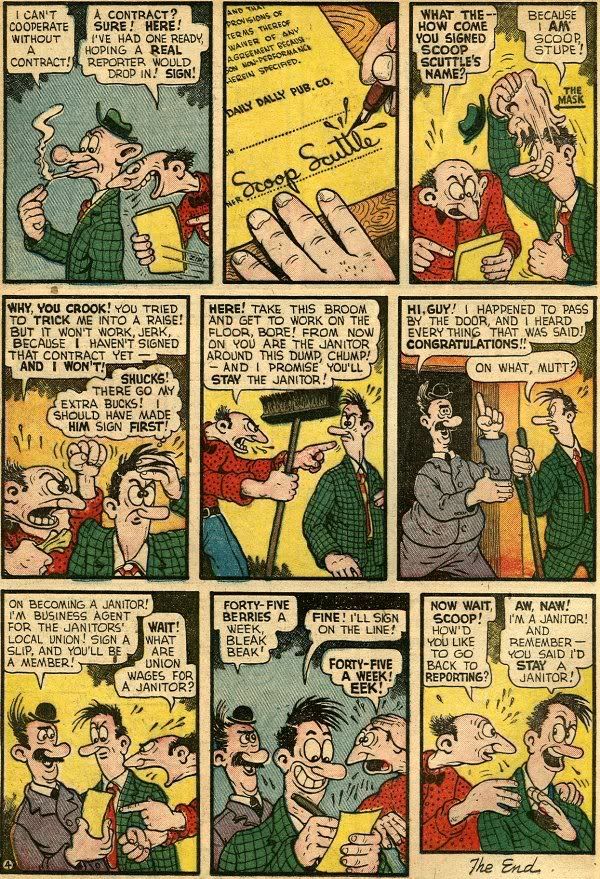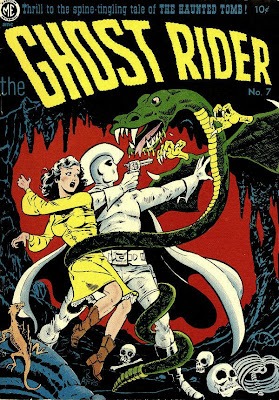 Number 296
Number 296
Foley of the Fighting 5thYou won't see a lot of Wild West-type comics on
Pappy's cuz Pappy don't like 'em. Most of them, anyway; there are a few I like. Tom Gill's
Lone Ranger and Dick Ayers'
Ghost Rider spring to mind. I also like some of the DC Western comics, and I'll show you a couple as we ride along the dusty trail. I like this one from
All-American Western #104, November 1948, because of the early Joe Kubert art. I like Joe's 1940s art but there are flaws, like the bad figure drawing on the bottom of page 4. John Giunta did the inking.
All-American Western, a continuation of
All-American Comics, went for 24 issues, then became
All-American Men Of War. In its war incarnation it lasted a lot longer than it did in its Western phase. This "Foley" strip is one of the stories in tear sheet form, cut out of the original comic books by a man who liked certain artists. The vandal would clip those stories and throw the rest of the book away. I got them over 25 years ago, hundreds of pages of loose tear sheets in a big box, and put them together like puzzles. It was probably that task that finally convinced me to wear glasses.
Page 1 /
Page 2 /
Page 3 /
Page 4 /
Page 5 /
Page 6 /
Page 7 /
Page 8*******
Karswell, of
The Horrors Of It All is posting a Zebra story today. He asked if I had any, and what I have is another of those crumbling stories cut from comics. The pages are much worse than the Foley story. They've disintegrated, as you can see, but the story is understandable…just screwy. John Doyle, the lawyer who is the Zebra, won't show up in any John Grisham novels. Considering how he represents this client I'm surprised he wasn't disbarred. The story, "The Phantom Philtre," was the last Zebra story, is from
Green Hornet Comics #30, May-June, 1946, and is drawn by Bob Fujitani.
































































